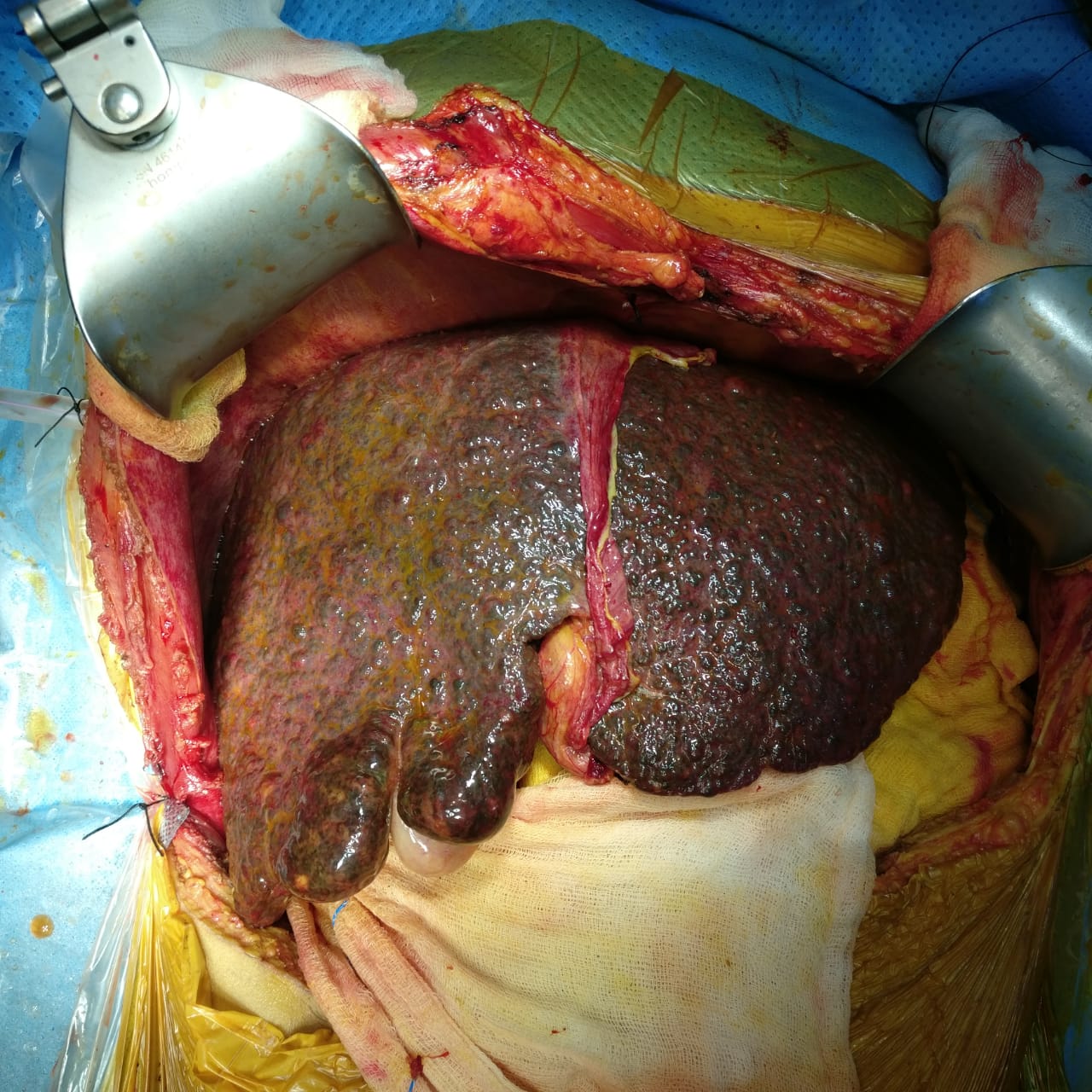Dr. Bipin Vibhute & Dr. Shailesh Sable on DD Sahyadri – लीव्हर ट्रान्सप्लान्ट एक संजीवनी
CIRRHOSIS OF LIVER

Cirrhosis of liver

Normal healthy liver
Cirrhosis is a type of liver disease where in there is scarring and damage of liver due to various causes which eventually leads to loss of liver function ( also known as end stage liver disease) or liver failure and death.It is chronic condition which occurs over a long period of time (usually over a couple of decades).The causes can be divided into preventable (acquired) and non-preventable (genetic).
Some of the common causes of liver cirrhosis seen in Indian population are as follows:
- Chronic alcohol consumption
- Viral infections (hepatitis B & hepatitis C)
- NASH or non-alcoholic fatty liver disease (or also knows as Fatty liver)
- Autoimmune liver disease
- Wilson’s disease, Hemochromatosis, etc (metabolic or genetic conditions)
- Miscellaneous (other uncommon causes)
Cirrhosis is progressive and irreversible condition & usually worsens over a period of time leading to either a liver transplant or death. Life expectancy of cirrhosis patients depend upon the stage of disease or number and severity of associated complications. Life expectancy is assessed based on MELD or CTP scores.
MELD SCORE (model for end-stage liver disease score) :
Score determines likelihood of dying within 3 months due to cirrhosis. Formula based on Sr. Creatinine, Bilirubin and INR values. Higher the MELD score more likelihood of dying within 3 months without a life saving liver transplant and would benefit from early liver transplant. PELD score is the paediatric (kids) counterpart to assess the scores in children.
| MELD score formula | MELD = 3.78[Ln serum bilirubin (mg/dL)] + 11.2[Ln INR] + 9.57[Ln serum creatinine (mg/dL)] + 6.43
*If the patient has been dialyzed twice within the last 7 days, then the value for serum creatinine used should be 4.0 **For patients with liver cancer the MELD score increases depending upon the stage of the tumour |
| Interpretation of MELD score – 3 month mortality in hospitalised patients | |
| 40 or more — 71.3% mortality
30–39 — 52.6% mortality 20–29 — 19.6% mortality 10–19 — 6.0% mortality <9 — 1.9% mortality |
|
| PELD score formula | PELD = 4.80[Ln serum bilirubin (mg/dL)] + 18.57[Ln INR] – 6.87[Ln albumin (g/dL)] + 4.36(<1 year old) + 6.67(growth failure) |
CTP ( Child-Pugh-Turcotte score):
CTP score is used to assess or classify cirrhosis into three classes Child A, Child B & Child C. Child A is mild disease and can be observed without a liver transplant or if treatable cause then treated accordingly. Child B is moderated disease and due considerations or planning for liver transplant can be initiated at this stage. Child C on the other hand is considered severe liver damage and mandates an urgent liver transplant depending upon the condition of patients.
| Parameters | Score | ||||
| 1 | 2 | 3 | |||
| Bilirubin (mg/dL)
PBC/PSC |
<2
<4 |
2-3
4-10 |
>3
>10 |
||
| Albumin (g/dL) | >3.5 | 2.8-3.5 | <2.8 | ||
| Prothrombin Time
Seconds over control INR |
<4
<1.7 |
4-6
1.7-2.3 |
>6
>2.3 |
||
| Ascites | Absent | Mild/ Moderate | Severe/Refractory | ||
| Encephalopathy | None | Grade 1-2 | Grade 3-4 | ||
| Child score classification | |||||
| Child A: 5-6
(well compensated) |
Child B: 7-9
(significant functional compromise) |
Child C: 10-15
(decompensated) |
|||
| Survival according to the Child score | |||||
| Child class (score) | 1 year survival | 2 year survival | |||
| A (5-6) | 100% | 85% | |||
| B (7-9) | 81% | 57% | |||
| C (10-15) | 45% | 35% | |||
Precautions for Cirrhosis patients:
Avoid Alcohol: Progress of cirrhosis can be halted by stopping alcohol consumption. Overall it improves the nutritional status (corrects vitamins and mineral deficiencies) and fitness of patients. Long abstinence period also reduces the changes of post transplant addiction risk and damage to the transplanted organ.
Reduce Salt and water intake:Depending upon the severity of liver disease or cirrhosis salt and water needs to be restricted. It keeps the patients dry as cirrhotic liver is unable to remove excess water from body. Stay away from processed food and adding salt while cooking.
Vaccination: Vaccination against hepatitis B & A is available and should be done.
Diet & Exercise: High protein diet and frequent snacks (specially midnight snack) is advisable as it not only reduces the risk of infection & complications it helps maintain the fitness. Cirrhosis patients are prone to hypoglycaemic attacks as the glucose storage capacity of the damage liver is lost.
No over-the-counter drugs (medicines): avoid over the counter medications and always consult your treating physician before consuming it. Drug metabolism is altered in cirrhosis leading to high risk of complications like liver or kidney failure.
Role of liver transplant surgeon:
Cirrhosis of liver is managed by multidisciplinary team of clinicians which includes: hepatologist, transplant surgeon, nutrition therapist, intensivist / anaesthetist, dentist, cardiologist and pulmonologist.
Cirrhosis patients need to see a Liver transplant surgeon when he/she develops decompensation or his MELD or Child (CTP) scores jumps to critical level mandating an early liver transplant.
Decompensated liver cirrhosis in the form of ascites (fluid in abdomen) or SBP (spontaneous bacterial peritonitis – infection of the fluid in abdomen) or HRS (Hepato-renal syndrome- kidney damage/failure
due to cirrhosis) reduces one year chances of survival by > 50%.
Early referral for liver transplant should be considered as it has shown to improve the outcomes of transplant surgery.
